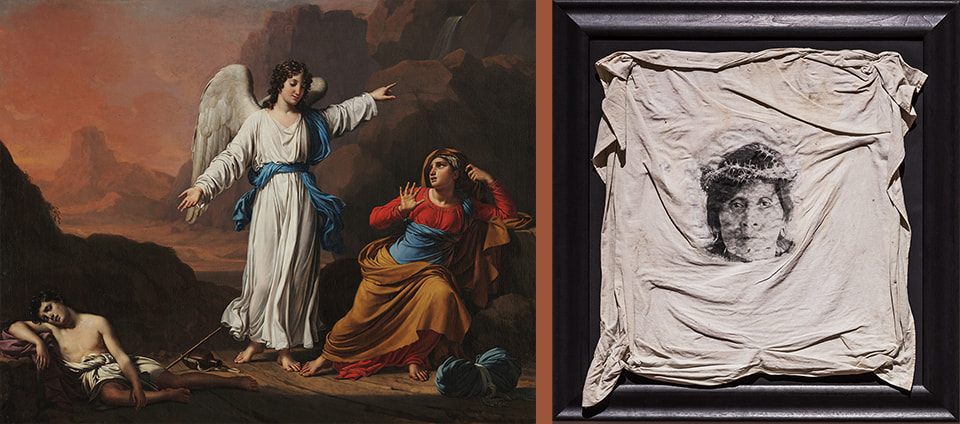Double Vision: Art from Jesuit University Collections
A first-of-its-kind exhibition highlights the diversity, depth and quality of collections.
Feb. 16 – May 22, 2022
MOCRA follows Saint Louis University’s COVID-19 prevention guidelines. The museum is currently open to both members of the SLU community and the general public. Masks are not required, but they are respected. If requested, our staff members will wear a mask when interacting with you.
Learn about the history of the Jesuits and the arts, hear outstanding classical guitar music, and go deeper into “Double Vision” with a Spotlight Tour.
Check out events related to “Double Vision”
Three museums and seven centuries of art
“Double Vision: Art from Jesuit University Collections” speaks to the unique role of art in Jesuit teaching as an instrument for finding meaning in life through imagination, feelings and reflection. The exhibition features 28 works from MOCRA, the Haggerty Museum of Art (Marquette University), and the Loyola University Museum of Art (Loyola University Chicago).
Artists include:
- Romare Bearden
- Doug DePice
- Jordan Eagles
- Daniel Goldstein
- Luis González Palma
- Donald Grant
- Keith Haring
- Nicholas Herrera
- Tim Hetherington
- Adrian Kellard
- Glenn Ligon
- Gary Logan
- Adi Nes
- Miguel Rio Branco
- Larry Rivers
- Georges Rouault
- Kara Walker
- Andy Warhol
- May Wilson
as well as artists from the 15th through 19th centuries including Jean Bourdichon, Utagawa Kunisada, Giannicola di Paolo Manni, Joseph Paelinck and Willem Vrelant.
Art that teaches, delights and moves
The exhibition is inspired by the Stations of the Cross, a 14-step devotion that commemorates the suffering and death of Jesus Christ. In place of the traditional Passion narrative, 14 themes expressive of the human condition—such as Justice, Wisdom and Compassion—are each paired with two works of art as a means for providing multiple points of entry for exploring the themes. The act of moving through the exhibition, the narrative arc suggested by the themes and the sometimes surprising juxtapositions of art are intended (like the traditional stations) to encourage an imaginative, contemplative space for personal reflection.
An exhibition catalogue includes an introductory essay by Fr. Tom Lucas, S.J., (artist, historian, and pastor at St. Ignatius Parish, Sacramento, CA), reflections on each pairing by members of the participating university communities and images of the featured works of art. The catalogue will be available free of charge to exhibition visitors and is made possible by generous support from the Patrick and Beatrice Haggerty Foundation.
Although Ignatius Loyola didn’t have an artistic bone in his body, he bequeathed to the Jesuit order and its institutions a sensibility, an appreciation for the revelatory power of the imagination that was a breakthrough in the Western spiritual tradition.
—Tom Lucas, S.J.
Watch Fr. Lucas discuss “Art in the Jesuit Tradition.”
MOCRA offers this exhibition as a way of highlighting the power of art and imagination in Jesuit education during the Ignatian Year. This worldwide observance from May 20, 2021, to July 31, 2022, commemorates the 500th anniversary of a cannonball striking Ignatius of Loyola, beginning a process of spiritual transformation that led to the founding of the Society of Jesus (the Jesuits) and the influential approach to Christian life known as Ignatian spirituality. Ignatius’s embrace of the power of the imagination is expressed in Jesuit education, which seeks, as Fr. Lucas notes, “to teach, to delight and to move.”
